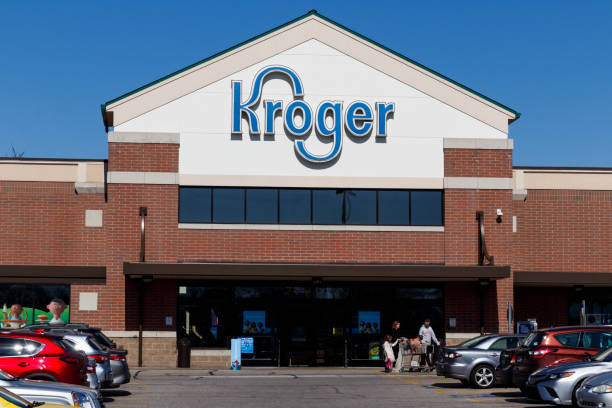A new self-service advertising platform comes at a point of growing pains for the channel where many brands have become “reluctant” buyers. Kroger Precision Marketing (KPM), the retail media unit of grocery giant Kroger, today (June 28) announced that it has been in-housing its services in a bid to wrest greater control over the business, including through the development of a new advertising platform. While other retail media networks have steered toward in-housing in recent months, KPM stands as one of the most mature offerings in the category and believes its relative level of technological sophistication and scale could make its in-housing decision an impactful one for an industry grappling with sharper growing pains. We have a high degree of confidence and excitement around this platform signaling the next stage of retail media maturity,” Cara Pratt, senior vice president of KPM, told Marketing Dive in an interview. “We look forward to being one of the leaders that influences change in the industry holistically.” KPM also hopes it can deliver better advertising experiences to consumers as marketers gain access to more self-service tools for targeting, optimizing and iterating on campaigns powered by the grocer’s troves of first-party shopper data, which largely stem from its loyalty card program. The platform at launch includes search-based insights and custom ad groups; creative design offerings and the ability to save multiple creative templates by brand and product; management options for campaign budgets, messaging, and flighting; and the ability to build reports and improve performance against deterministic retail data points like sales lift, household penetration, and unit lift. “We know we need to remove friction from the retail media buying process,” Pratt said in a press statement attached to the announcement. “Building a new foundation of integrated technology empowers brands and agencies to maximize retail media’s potential. Together, we will deliver a more convenient, personalized, and inspirational shopping experience.” KPM is initially focusing its in-housing efforts on existing on-site display and sponsored product listing formats but will eventually expand the purview to encompass its entire portfolio. The display and product listing capabilities will be available to select partners in the coming months before going wide across KPM’s marketplace in the fall, with a push into areas like offsite and programmatic self-service inventory expected to take place later. KPM two years ago introduced its own private programmatic marketplace. While the in-housing news marks a milestone in KPM’s strategy, the unit is still relying on relationships with partners like demand-side platforms, publishers, and data and analytics firms. Advertisers working with third-party vendors Pacvue, Skai, and Commerce IQ can continue to manage their inventory through those companies, while KPM said it would detail further integrations down the line. “We fundamentally believe that no one retailer, brand or platform is going to set the stage and own the consumer-first future for advertising,” said Pratt. “It’s going to take very disciplined and deliberate connections to drive the right level of interoperability.” Raising all ships
KPM, which launched in 2017 out of Kroger’s 84.51° data-science team, has been developing its in-house platform for about 18 months and added 100 net-new roles in the past year to support the initiative, according to Pratt. Headcount growth stands in contrast to other digital platforms and publishers that have enacted mass layoffs due to an anemic ad market. Hiring has touched on areas including engineering, data science, media buying, operations, customer support and product development. KPM is not more actively pursuing acquisitions as a result of the in-housing, Pratt said but always considers a buy, build, or partner approach to technology investments. KPM clearly wants to position itself as a model for other retail media networks, but that doesn’t necessarily entail encouraging in-housing, a typically costly and time-intensive process. The broader goal is to push retailers to not pursue the lowest-common-denominator applications of their data and to instead prioritize value and consistency, according to Pratt. Those mandates could help set retail media networks apart from traditional programmatic media, which studies indicate remains rife with wasted spending and fraud. There’s an opportunity for other players to lean into this change with an elevated mindset on the business impact that they can bring,” said Pratt. “As a player, and a formidable player, in this space, we firmly believe we’ve got to raise the boats for other folks.” KPM’s in-housing arrives at a transitional moment for the category. Retail media is an undeniable magnet for ad spending even as the rest of the digital market contends with a downturn. The channel is forecast to be the third fastest-growing this year behind connected TV and out-of-home, representing 14.4% of global ad revenues, according to GroupM. But some advertisers have started to view retail media buys as less of a benefit and more of a tax imposed as part of doing business with stores that control other key business levers like shelf placement. A widely discussed January report from the Association of National Advertisers, a trade organization representing brand marketers, characterized many retail media buyers as “reluctant.” Other retail media networks have tried to address the patchwork state of their business. At the Cannes Lions International Festival of Creativity earlier this month, Albertsons proposed an industry-wide standardization framework for retail media. The guidelines draw on existing recommendations from trade groups like the Interactive Advertising Bureau. Albertsons is in the process of merging with Kroger, which would further shore up the latter’s dominance in space. For now, both are separately beating the drum of industry unity to preserve retail media’s momentum.

